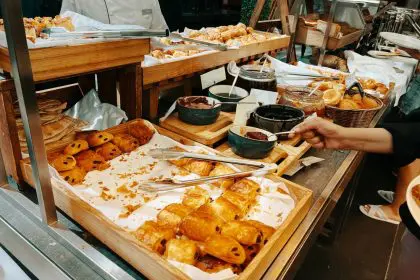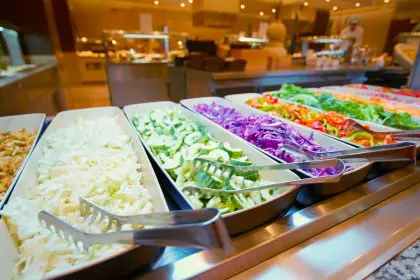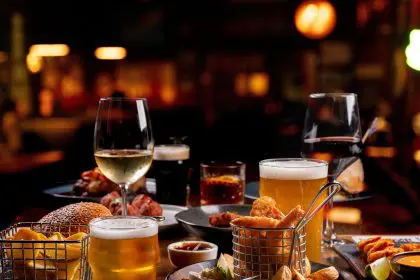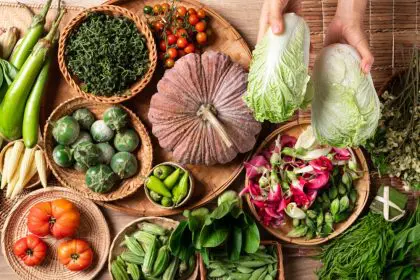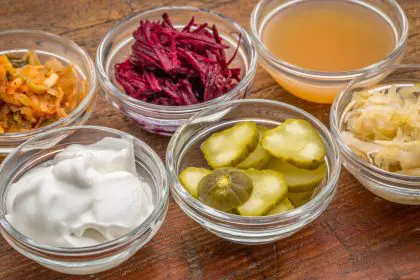The American love affair with burgers has reached fever pitch levels across the nation, transforming what was once considered simple fast food into a cultural phenomenon that dominates social media feeds, restaurant menus, and dinner table conversations. This obsession has evolved far beyond basic beef patties between buns, creating an entire movement that reflects deeper changes in how Americans relate to food, comfort, and community.
Walk through any major city today and the evidence becomes immediately apparent. Burger joints occupy prime real estate on every corner, from hole-in-the-wall establishments serving massive creations to upscale restaurants featuring wagyu beef patties with truffle aioli. The sheer variety and innovation surrounding this classic American dish has reached unprecedented levels.
The phenomenon extends well beyond traditional dining experiences. Social media platforms overflow with perfectly staged burger photography, food challenges featuring towering burger creations, and endless debates about which establishment serves the ultimate version. This digital obsession has created a feedback loop where restaurants compete to create increasingly photogenic and extreme burger variations.
What started as simple sustenance has transformed into a form of edible entertainment, with each new burger creation attempting to outdo the last in terms of size, ingredients, or visual appeal. The result is a nationwide preoccupation that shows no signs of slowing down.
The comfort food revolution driving burger mania
The current burger obsession reflects a broader shift toward comfort food that gained momentum during challenging times and has continued to evolve. Americans increasingly seek foods that provide emotional satisfaction alongside physical nourishment, and burgers perfectly fulfill this dual need.
- Nostalgic connections play a major role in burger appeal, as these foods connect people to childhood memories and simpler times. The familiar combination of meat, cheese, and bread triggers positive associations that transcend mere taste preferences.
- Customization possibilities allow individuals to create personalized versions that reflect their tastes and dietary preferences. This level of control appeals to consumers who want unique experiences tailored to their specific desires.
- Accessibility across price points means burgers satisfy cravings whether someone has five dollars or fifty to spend on a meal. This democratic nature makes burger obsession inclusive rather than exclusive.
- Immediate gratification comes from foods that deliver quick satisfaction without requiring elaborate preparation or dining rituals. Burgers provide instant comfort in an increasingly complex world.
The comfort food aspect has been amplified by societal stresses that make people crave familiar, satisfying foods. Burgers represent stability and indulgence in uncertain times, making them particularly appealing when other aspects of life feel unpredictable.
Social media transforms burgers into visual spectacles
The rise of food photography and social media sharing has revolutionized how burgers are conceived, prepared, and consumed. Restaurants now design burgers with visual impact as a primary consideration, understanding that photogenic food generates more business than taste alone.
Instagram and TikTok have created new standards for burger presentation that prioritize dramatic height, colorful ingredients, and eye-catching combinations. These platforms reward the most visually stunning creations with viral exposure that can make or break restaurants overnight.
The “burger challenge” trend has emerged from this social media environment, where establishments create increasingly extreme versions designed to generate shares, likes, and comments. These challenges often feature burgers so large they require multiple people to finish or special techniques to eat.
Food bloggers and influencers have built entire careers around documenting burger experiences, creating detailed reviews and rankings that influence where people choose to dine. This professional food criticism focused specifically on burgers has elevated the dish’s cultural status.
The visual nature of modern burger culture has also influenced home cooking, with amateur chefs attempting to recreate restaurant-quality presentations in their own kitchens. This has led to increased sales of specialty ingredients and equipment designed specifically for burger preparation.
The gourmet burger movement elevates expectations
Traditional fast food burgers have been joined by increasingly sophisticated versions that incorporate premium ingredients and innovative preparation methods. This gourmet burger movement has redefined what consumers expect from their burger experiences.
High-end burger establishments now feature ingredients like aged cheeses, specialty sauces, artisanal buns, and premium meat blends that cost significantly more than traditional options. These elevated versions justify their higher prices through superior quality and unique flavor combinations.
The farm-to-table movement has influenced burger culture by emphasizing locally sourced ingredients and sustainable preparation methods. Consumers increasingly seek burgers made with grass-fed beef, locally grown vegetables, and house-made condiments.
Craft beer pairings have become standard in many burger-focused establishments, with specific beer selections designed to complement particular burger flavors. This pairing culture has added sophistication to burger dining experiences.
Celebrity chefs have embraced burger creation as a legitimate culinary pursuit, developing signature versions that showcase their skills and creativity. These high-profile endorsements have further elevated the burger’s cultural status.
Regional variations fuel nationwide competition
Different regions across America have developed distinctive burger styles that reflect local tastes and available ingredients. This regional diversity has created friendly competition and tourism opportunities centered around burger experiences.
West Coast burger culture emphasizes fresh ingredients, creative toppings, and health-conscious options that reflect the region’s lifestyle preferences. These burgers often feature avocado, sprouts, and other ingredients associated with California cuisine.
Southern burger traditions incorporate regional flavors like pimento cheese, fried green tomatoes, and barbecue sauces that reflect local culinary heritage. These variations connect burgers to deeper cultural traditions.
Midwest burger culture focuses on substantial portions and traditional preparations that emphasize meat quality and classic combinations. These regions often pride themselves on perfecting fundamental burger elements rather than pursuing exotic variations.
East Coast burger scenes vary dramatically between urban and rural areas, with city establishments focusing on innovation while smaller towns maintain traditional approaches. This diversity within regions adds complexity to national burger culture.
The competition between regional styles has intensified through social media exposure and food tourism, with people traveling specifically to experience famous local burger variations. This mobility has spread regional influences nationwide while maintaining local distinctiveness.
The psychology behind burger cravings
Understanding why burgers trigger such intense cravings requires examining the psychological and physiological factors that make these foods particularly appealing to human brains and bodies.
The combination of protein, fat, and carbohydrates in burgers activates multiple reward pathways in the brain, creating satisfaction that extends beyond simple hunger fulfillment. This combination triggers the release of chemicals associated with pleasure and contentment.
Texture variety within a single bite provides sensory stimulation that keeps eating experiences interesting. The contrast between soft buns, juicy meat, crisp vegetables, and creamy sauces creates complex sensations that maintain engagement throughout the meal.
Portion sizes in modern burger culture often exceed normal meal requirements, triggering psychological satisfaction from abundance. This oversized approach appeals to deep-seated desires for security and plenty that extend beyond immediate nutritional needs.
The handheld nature of burgers creates intimate eating experiences that feel more personal than utensil-based meals. This direct food contact satisfies primitive feeding instincts that modern dining often suppresses.
Cultural associations with celebration, reward, and indulgence make burgers feel like treats rather than routine meals. This special status increases psychological satisfaction and creates positive anticipation around burger consumption.
Economic factors driving the burger boom
The current burger obsession reflects economic realities that make these foods particularly attractive to both consumers and business owners during challenging financial times.
Restaurant operators favor burger-focused concepts because they typically require less specialized kitchen equipment and staff training compared to other cuisine types. This lower barrier to entry has resulted in increased burger establishment density.
Food costs for basic burger ingredients remain relatively stable compared to more exotic cuisine components, making it easier for restaurants to maintain consistent pricing. This stability appeals to both operators and cost-conscious consumers.
The scalability of burger concepts allows successful establishments to expand rapidly through franchising or multiple locations. This growth potential attracts investors and entrepreneurs seeking profitable food service opportunities.
Consumer spending patterns during economic uncertainty tend to favor familiar, satisfying foods that provide good value. Burgers typically offer substantial portions at reasonable prices, making them attractive during budget-conscious periods.
The delivery and takeout compatibility of burgers has become increasingly important as dining habits shift toward off-premise consumption. These foods travel well and maintain quality during transport better than many alternatives.
The future of America’s burger obsession
Current trends suggest that burger obsession will continue evolving rather than diminishing, with new innovations and cultural influences shaping how these foods develop over time.
Plant-based burger alternatives have gained significant traction among environmentally conscious consumers and those reducing meat consumption. These options maintain familiar burger experiences while addressing sustainability concerns.
Technology integration through ordering apps, customization platforms, and automated preparation systems is changing how burgers are ordered and prepared. These innovations may influence both convenience and consistency in burger experiences.
Health-conscious adaptations including alternative proteins, reduced-sodium preparations, and vegetable-heavy versions are expanding burger appeal to wellness-focused demographics without abandoning core burger concepts.
Global flavor influences are being incorporated into American burger culture, creating fusion versions that reflect increasing cultural diversity. These international inspirations add complexity while maintaining familiar burger structures.
The burger obsession has become so deeply embedded in American culture that it appears likely to persist as a defining characteristic of contemporary food preferences. Whether through traditional preparations or innovative adaptations, burgers seem destined to remain central to American dining experiences for the foreseeable future.



